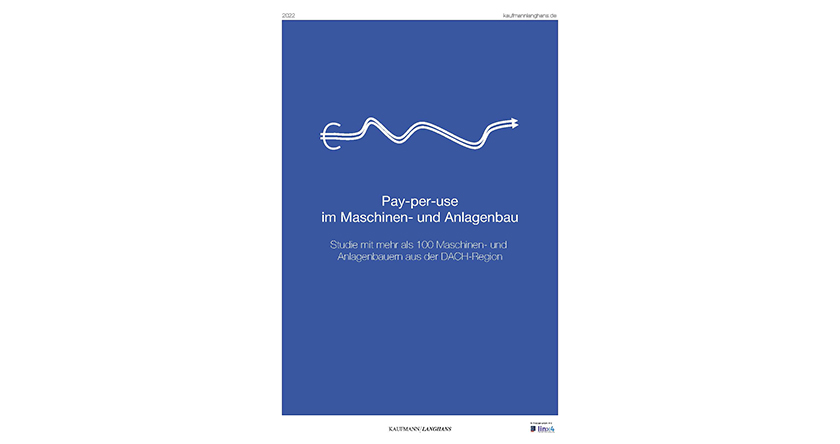The Management & Entrepreneurship study programs supported Iinx4 in an exciting study on pay-per-use models in mechanical and plant engineering.
Our Management & Entrepreneurship study programs have supported linx4 – Pay-per-Use Financing and KAUFMANN / LANGHANS in the evaluation of an exciting study about pay-per-use models in mechanical and plant engineering. More than 100 machine manufacturers from over 10 different industries were surveyed on the topic of pay-per-use.
The basic principle of pay-per-use financing is not new, as it has long been applied to the use of real estate through rental agreements. Other industries have also recognized the advantages of such financing models, since it is primarily a matter of being able to make use of the respective offer in the absence of the possibility of providing financial resources for investments apart from the option of external financing. In addition to the challenge of financing, there is also an increasing awareness that owning goods does not only have advantages. Examples of such financing models include the use of vehicles, software and streaming services or the tariff models of mobile phone providers.
The models must be differentiated with regard to the billing parameters. In most cases, billing is based on time units, and a further distinction can be made here as to whether a fixed amount is paid for a time unit that is independent of the actual use (flat rent) or whether payment is only made for the actual time of use (value card tariff for mobile telephony). Financing models that do not charge according to time units, but according to production units, are not very widespread. Whereas the risk of utilization lies primarily with the customer when charging for services provided on a time basis, this risk shifts to the company offering the service when charging per production unit. Combination models, which consist of time units and utilization units, distribute the utilization risk. A classic example is the division of a mobile phone tariff into a basic charge that is independent of usage and billing units that exceed a defined usage threshold.
